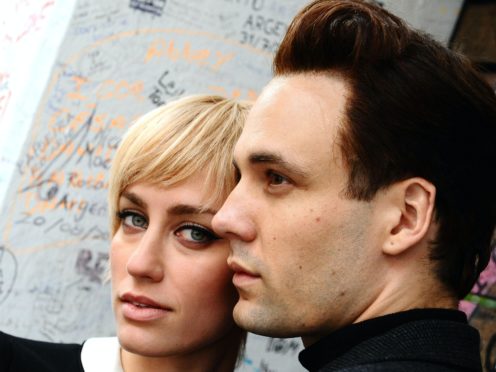A German photographer who shot some of the earliest and most striking images of the Beatles and had a lasting impact on their visual style has died aged 81.
Astrid Kirchherr died on Tuesday in her native Hamburg, days before her 82nd birthday, her friend Kai-Uwe Franz told the Associated Press.
Her death was first announced by Beatles historian Mark Lewisohn, who tweeted on Friday that Kirchherr made an “immeasurable” contribution to the group and was “intelligent, inspirational, innovative, daring, artistic, awake, aware, beautiful, smart, loving and uplifting”.
Danke schön, Astrid Kirchherr. Intelligent, inspirational, innovative, daring, artistic, awake, aware, beautiful, smart, loving and uplifting friend to many. Her gift to the Beatles was immeasurable. She died in Hamburg on Wednesday, a few days before turning 82. RIP. pic.twitter.com/c8UHNK1tj4
— Mark Lewisohn (@marklewisohn) May 15, 2020
According to the German publication Die Zeit, she died of a “short, serious illness”.
Kirchherr was a photographer’s assistant in Hamburg and part of the local art scene in 1960 when her then-boyfriend Klaus Voormann dropped in at a seedy club, the Kaiserkeller, and found himself mesmerised by a young British rock group.
The five raw musicians from Liverpool had recently named themselves the Beatles.
As she later recalled, Voormann spent the next few days convincing Kirchherr to join him, a decision which profoundly changed her.
“It was like a merry-go-round in my head, they looked absolutely astonishing,” Kirchherr later told Beatles biographer Bob Spitz. “My whole life changed in a couple of minutes. All I wanted was to be with them and to know them.”
Kirchherr had dreamed of photographing “charismatic” men and found her ideal subjects in the Beatles, especially their bassist at the time, Stuart Sutcliffe, a gifted painter. They quickly fell in love, even though she spoke little English and he knew little German.
“Stuart was a very special person and he was miles ahead of everybody,” she told NPR in 2010. “You know as far as intelligent and artistic feelings are concerned, he was miles ahead. So I learned a lot from him and because in the ’60s we had a very strange attitude towards being young, towards sex, towards everything.”
The Beatles in the early 1960s were nothing like the smiling superstars the world would soon know, and they seemed to have little in common with Kirchherr and her friends, young existentialists dubbed “Exies” by John Lennon.
The rock group favoured black leather and greased back hair and gave wild, marathon performances.
The James Dean lookalike Pete Best was the Beatles’ drummer, and Paul McCartney was playing guitar, along with Lennon and George Harrison. Best was replaced in 1962 by Ringo Starr, and McCartney moved over to bass when Sutcliffe left and became engaged to Kirchherr.
Kirchherr was liked and trusted by all of them, and her photographs captured a group more interested in looking cool and “tough” than in being lovable.
She took black and white portraits, including John, Paul and George in leather and cowboy boots on a rooftop; all five with their instruments on an abandoned truck; and a moody close-up of John in an open fairground with Sutcliffe looming like a ghost in the background. Self-portraits captured Kirchherr’s own distinctive looks — her high cheekbones and closely cut blonde hair.
Sutcliffe collapsed and died of a cerebral haemorrhage in April 1962 aged 21. Kirchherr later married twice, including to the British drummer Gibson Kemp. Both marriages ended in divorce, and she said that she never got over Sutcliffe’s death.
“He was, and still is, the love of my life,” she told NPR in 2010. “I never, ever — and I was married a couple of times — met another man who was so fascinating, so beautiful, and so soft and well-mannered. You name it and that he was, and such a gifted artist.”
Over the decades following Sutcliffe’s death, Kirchherr worked as a freelance photographer and an interior designer among other jobs, and in recent years helped run a photography shop in Hamburg.
In the 1994 movie Backbeat, for which she served as a consultant, Kirchherr was played by Sheryl Lee and Sutcliffe by Stephen Dorff.
“Stephen is so much like Stuart it’s spooky,” she told The Washington Post in 1994. “Stephen has the same intensity when he talks to people. And he’s a very, very intelligent, very charming, very sexy boy. All the things I remembered Stuart had, Stephen has as well.”
